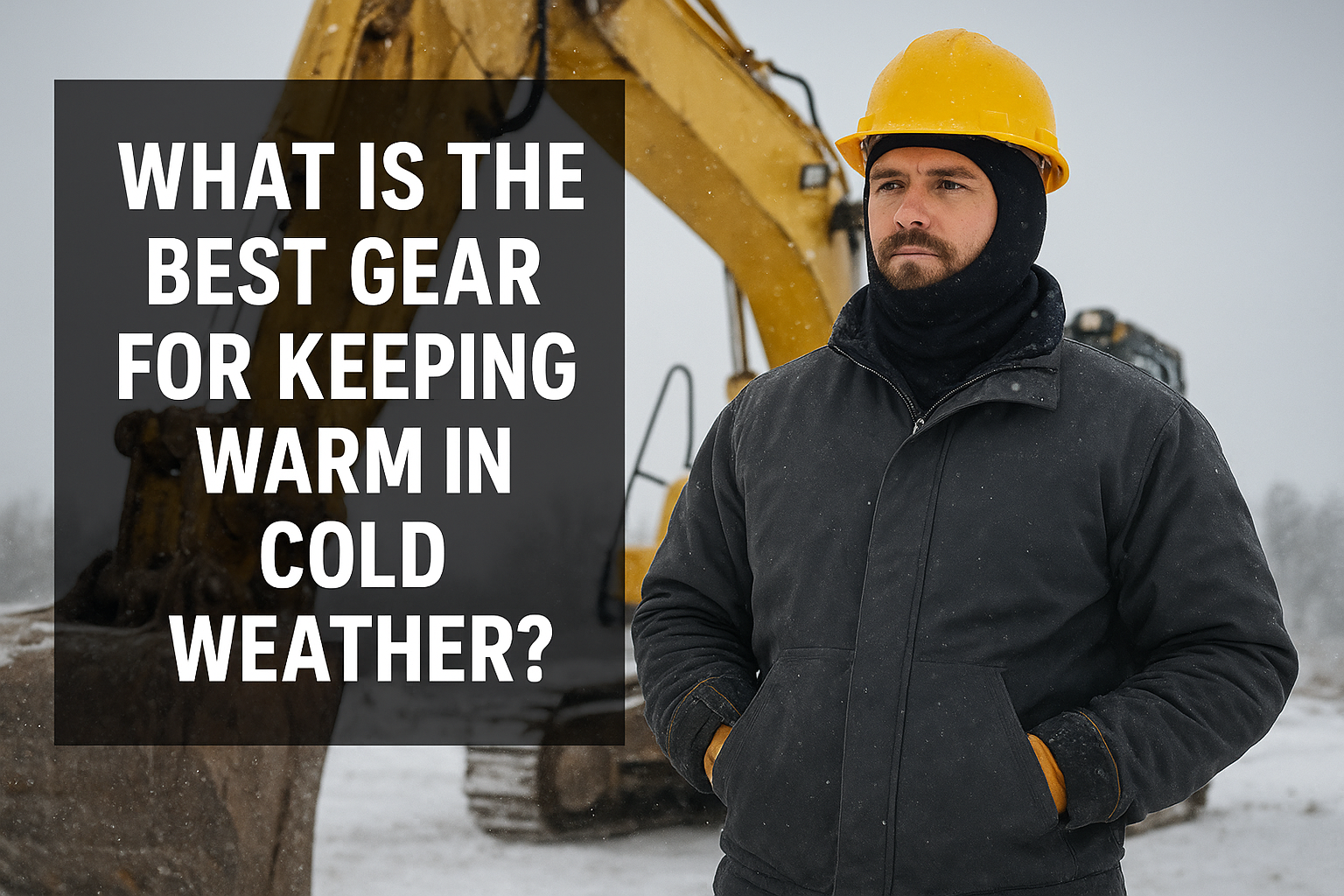The Dirt Desk - Q&A
What Is the Best Gear for Keeping Warm in Cold Weather?
When the temperatures drop, the real operators keep running. From early-morning startups to long night shifts in an open cab, staying warm on the job isn’t just about comfort — it’s about safety and performance. Cold weather can stiffen controls, freeze hydraulics, and slow reflexes. But with the right gear, you can stay sharp, safe, and warm through the worst of winter.
1. Layer Like a Pro
The key to warmth is layering. Start with a moisture-wicking base layer — merino wool or a synthetic thermal fabric that keeps sweat off your skin. Add a mid-layer like a fleece or quilted jacket for insulation. Top it off with a windproof and waterproof shell that blocks snow, sleet, and biting wind.
Look for gear made by trusted workwear brands like Carhartt, Helly Hansen, or Tough Duck — they’re built for long hours on site, not just for looks.
2. Heated Gear: Worth It
If you’re running equipment in freezing conditions, heated vests and jackets can be game changers. Battery-powered gear from brands like Milwaukee, DeWalt, or Makita can keep your core warm for up to 8 hours on a single charge. Some even use the same batteries as your power tools — convenient if you’re already using that brand on the job.
3. Gloves That Work
Frozen fingers make it impossible to operate controls safely. Look for insulated, waterproof gloves that still allow dexterity — Thinsulate-lined options or gloves with hybrid leather and nylon shells are popular with operators. If you’re constantly in and out of the cab, consider liner gloves under a heavier pair so you can peel layers as needed.
4. Boots Built for Ice and Mud
When you’re climbing in and out of machines all day, cold feet are misery. Invest in insulated, waterproof boots with at least 400g–800g of insulation and solid traction. Rubber or composite soles grip better on icy steps and frozen ground. A good pair of thermal socks — merino wool or alpaca blend — will make a huge difference.
5. Head and Neck Protection
You lose a ton of heat through your head and neck. A fleece-lined balaclava, neck gaiter, or even a thin thermal beanie under your hard hat can make a long shift much more bearable. Some operators swear by helmet liners made for cold-weather construction — they fit snugly under safety gear without bunching.
6. Keep the Cab Cozy
If your machine has a cab, don’t overlook heater maintenance — a clogged cabin filter or weak blower motor can make even the best heater useless. And if you’re in open-air equipment, consider 12V cab heaters or seat warmers that plug into the auxiliary outlet. A small investment goes a long way in keeping you focused and alert.
The best cold-weather gear keeps you dry, insulated, and mobile — three things you need to stay effective when the mercury plunges. Operators know that productivity doesn’t stop when it’s -20°C or below; it just takes the right gear and grit to keep moving.
So layer up, gear up, and stay warm out there — because winter doesn’t wait, and neither does the work.

